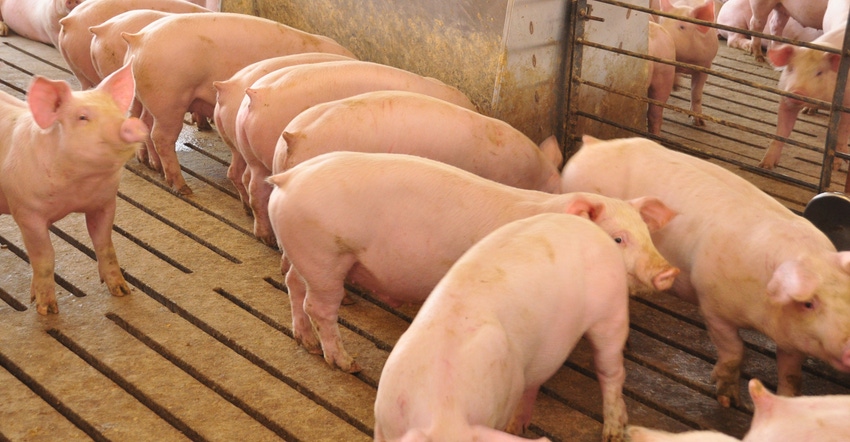February 24, 2020

Several major U.S. meat processors recently announced their intention to process only pigs that are free of ractopamine, a commonly used feed additive. This has led to many questions about what it means to sell “ractopamine-free pigs.” Approved by the U.S. Food and Drug Administration, ractopamine is added to feed to produce leaner pork. Not all pork producers use this additive.
Locke Karriker, professor with the Department of Veterinary Diagnostic and Production Animal Medicine at Iowa State University, and Chris Rademacher, ISU Extension swine veterinarian, have developed a “frequently asked questions” document to help provide answers. Ractopamine Free Pork and Implications for Use in Growing Pigs offers a summary of the relevant scientific data and knowledge about ractopamine. It includes swine producer experiences and anecdotal information to guide producers in adjusting to the new requirements.
Adjusting to new requirements
“This online document is intended for pork producers, swine exhibition participants, feed manufacturers and veterinarians,” Rademacher says. “It will be updated as new questions arise to help provide the latest information.”
Also, a new publication from Jodi Sterle, associate professor in the department of animal science at Iowa State, is now online. It incorporates available information on ractopamine into the decision-making process for management of market hog exhibitions, fairs and shows. Ractopamine (Paylean) Use in Show Pigs: Show Management Considerations for 2020 offers information, options and explanations for organizers, exhibitors and others associated with swine shows.
“We caution our readers that every situation is unique,” Sterle says. “Each swine show, fair and exhibition must make the decision about ractopamine that works for their specific circumstances.”
Going ractopamine-free isn’t simple
This past October the first of several U.S. pork processors announced they planned to go “ractopamine-free” to capitalize on China’s pork shortage due to the big outbreak of African swine fever in that area of the world. China, the world’s largest pork consumer, banned the feed additive ractopamine in December 2011.
As ISU’s Rademacher points out to Iowa producers, saying your farm is going to be ractopamine-free and doing it are two different things. “Selling ractopamine-free pigs isn’t simple. The main issue is that the ractopamine molecule is very big and easy to detect with conventional testing methods at very low levels. Thus, it’s not as simple as not feeding it, because for people who have gone through the ractopamine feeding program, some things that they’ve experienced include the contamination, even in the feed milling process.”
For more information, visit the Iowa Pork Industry Center.
Source: IPIC, which is solely responsible for the information provided and is wholly owned by the source. Informa Business Media and all of its subsidiaries are not responsible for any of the content contained in this information asset.
Reducing antibiotics in animal production
Last fall, DuPont held a TED event at company headquarters in Wilmington, Del. The DuPont nutrition and biosciences group had six scientists — including Leon Marchal — share research that is responding to some of the world’s biggest sustainability challenges.
The rise of multi-resistant bacteria poses an increasing risk to global health, Marchal says. “The United Nations predicts that by 2050, antimicrobial resistance will become our biggest single killer. Research has uncovered novel and alternative ways to reduce antibiotics in animal production, by using a holistic science-based approach. We can feed 10 billion animals sustainably, reducing the use of antibiotics and the evolution of multi-resistant bacteria.”
Source: DuPont, which is solely responsible for the information provided and is wholly owned by the source. Informa Business Media and all its subsidiaries are not responsible for any of the content contained in this information asset.
You May Also Like




